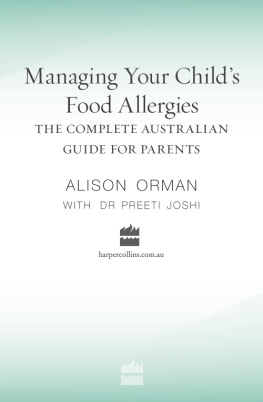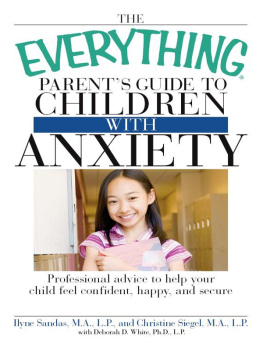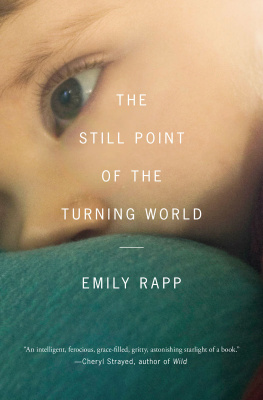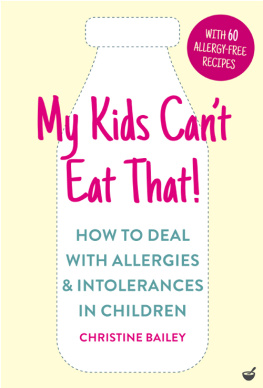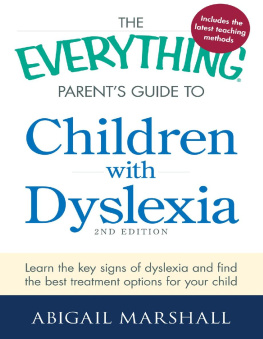
How Can You Use This
Book to Help Your Child?
It is my sincere hope that this book will not only enable you to determine whether your child has an unusual form of allergy but that it will help you to detect exactly what causes your child to feel unwell or to act inappropriately. In many instances you should be able to eliminate the cause and significantly help your child. However, if your childs problems are more complex, you may need to secure additional knowledgeable medical help.
Of course allergies are not a problem with every child. Only some children have physical illness and/or emotional, behavioral, and learning problems that are partly or mainly related to allergies or environmental exposures. Other childrens problems are entirely unrelated to these factors and are totally due to other medical problems. For that reason after reading this book you must be certain to discuss everything you decide to do with your childs physician.
This book does not need to be read from cover to cover. Read only the chapters or areas that pertain to your childs or familys complaints.
as the way she or he acts, writes, or draws, may provide important clues.
discuss many of the different characteristic ways that allergy can affect children of various ages (infants, toddlers, children, and adolescents).
Once you believe that your child might have a typical or unusual form of allergy, you will probably want to find out how you can detect what could be causing the problem. Sometimes it can be amazingly simple to find the cause of an allergy. Some parents will determine that foods appear to be the major concern. The short, simple diet in might provide easy, rapid answers in four to seven days.
give practical, at times subtle, pointers to help you find out if your child is having an allergic reaction and will help you detect the exact cause. These chapters also tell you what you can do to possibly help your child feel, behave, or learn better by keeping detailed health records, learning to take a pulse, and/or monitoring an asthmatic childs ability to breathe.
explains how you can sometimes merely change something inside your home, such as a childs pillow, and thereby resolve a chronic medical illness.
If a childs problems are due to chemicals, outside pollen, or pollution, suggestions in might quickly provide beneficial answers.
If your child has a specific major health or personality problem, read the individual pertinent chapters from 14 to 23. If fatigue is your childs major problem, for example, you may want to read only . Various chapters discuss other common, unrecognized forms of allergy or environmental illnesshyperactivity, depression, aggression, learning problems, delinquency, recurrent infection, intestinal symptoms, and so on. As you read the detailed histories, youll realize that not only do these children have symptoms often dating back to infancy but they often have one medical complaint after another until the allergy problem is recognized.
helps you learn to construct a diet that will enable many children to eat most of the foods to which they are sensitive.
compares typical allergy testing and treatment with the newer methods.
discusses the drugs commonly used to treat allergy.
Everyone should read . This chapter tells how you might be able to strengthen your childs immune system. When that is stronger, allergies and chemical sensitivities may no longer be a problem.
not felt well or acted properly for years, both the child and the parents can, at times justifiably, develop secondary psychological and emotional difficulties.
Additional typical histories of children who had specific types of unrecognized environmental illness or allergies are discussed in . You might be able to relate some of the detailed information discussed in this section to your childs specific problems. It helps to realize that other parents have been faced with similar challenges and to know what they did to help their children.
An extensive, detailed bibliography is provided for parents, educators, psychologists, counselors, physicians, and paramedical personnel who want to expand their knowledge and read more about certain aspects of environmental illness. This section should also provide scientific information for skeptics who doubt the efficacy of the newer treatment methods.
The index is purposely detailed so that you can quickly find information about the kinds of complaints that bother your child.
The Donahue Show
Some readers may wonder why this book is dedicated to a talk-show host. Throughout the book, in fact, I frequently discuss many of the patients who came to see us as a result of our Donahue shows in 1987 and 1988. It was truly an accident that I was asked to be on that initial program. Dr. George Shambaugh, a past professor of otolaryngology, was originally asked to be on the show because of his observations and publications indicating that ear problems, allergy, and hyperactivity occurred together in certain children. He suggested that I be invited instead because he had seen and been impressed by some of the films taken in our office that showed hyperactivity in children due to foods.
A vast number of mothers who subsequently came to our office said they were amazed to see the videotape of the hyperactive boy on that initial show. During that program many said that they realized for the first time that their childs behavior problem might be allergy-related.
In 1988 I was called, late on a Tuesday afternoon, to ask if I could find three mothers and their children to appear on an upcoming Donahue show. The families were all to be in New York City by the next day. You can imagine all the preparations that would be necessary for parents to be ready in less than twenty-four hours. I called five mothers, rather than three because I was certain some would not be able to get baby-sitters, clothing, beauty parlor appointments, and so forth on such brief notice. All the parents said they would come, and that videotapes of their children could be viewed nationwide. Most of the parents on the 1988 show had previously seen the 1987 program, and the information on that original presentation had changed their childrens lives. Now they were eager for the opportunity to share with other parents who didnt know where to turn for help. Most of the children discussed in this book were subsequently helped because of the knowledge parents gained from the 1988 show.
That Donahue program definitely hit a vital chord. The response from truly desperate parents was overwhelming. Phones rang throughout the country, and that show generated over 140,000 letters. Our staff cried on more than one occasion as we read the letters about the unbelievable anguish and grief in some families. Many mothers wrote us that tears of joy and relief streamed down their cheeks as they listened to Phil Donahue talk about the unusual types of allergy that could affect some youngsters. They recognized their child.



